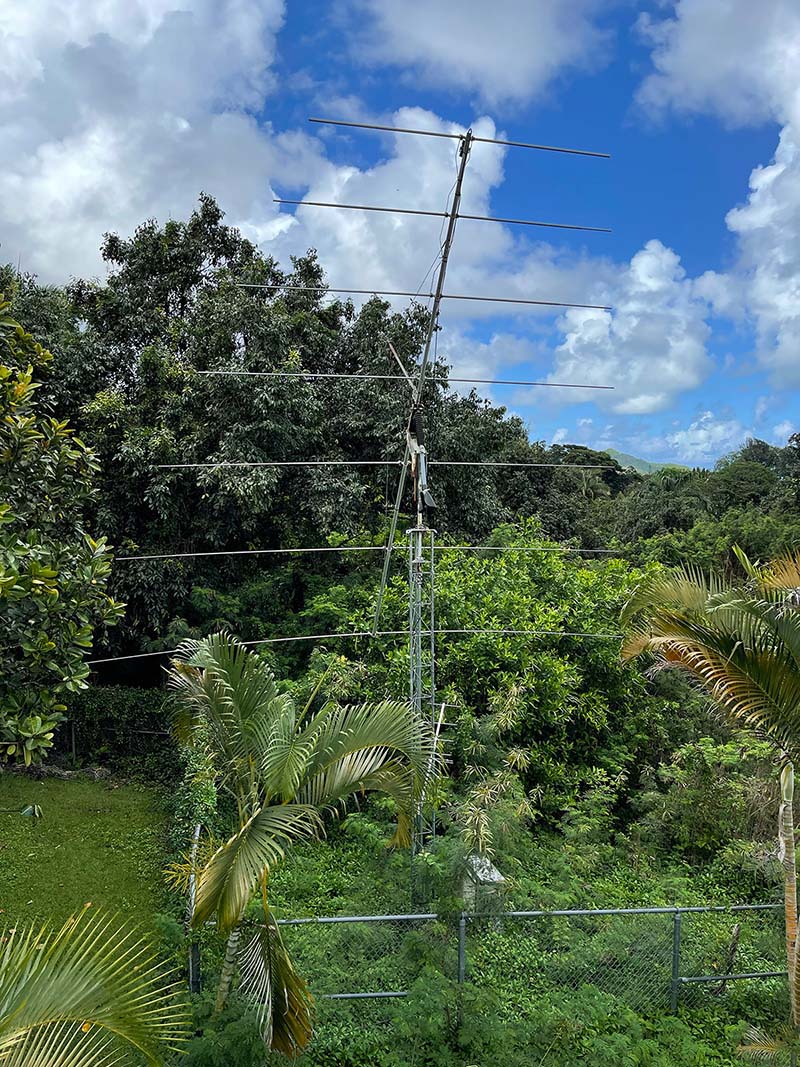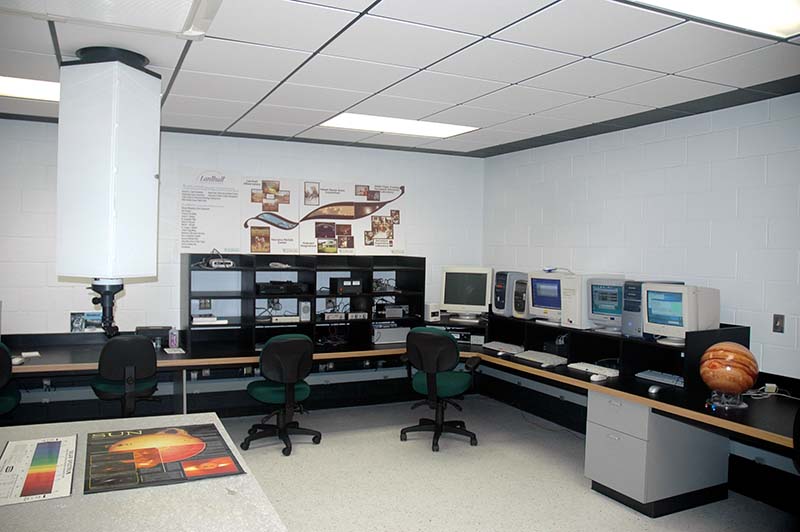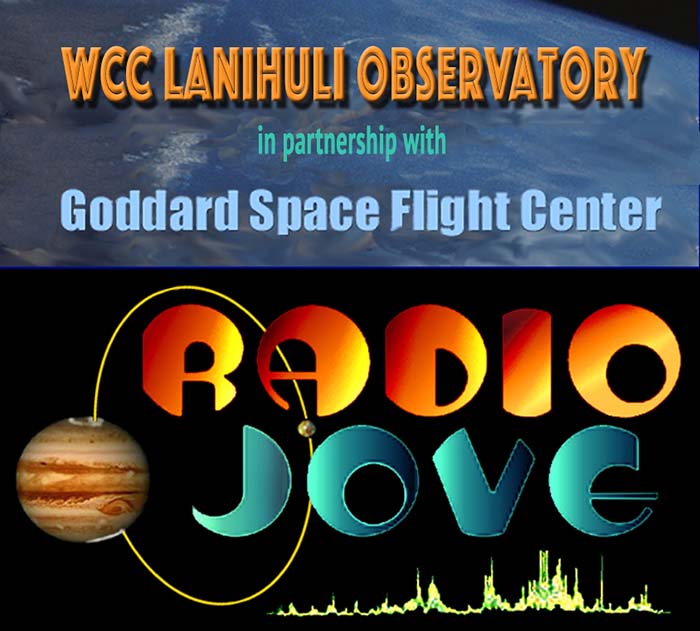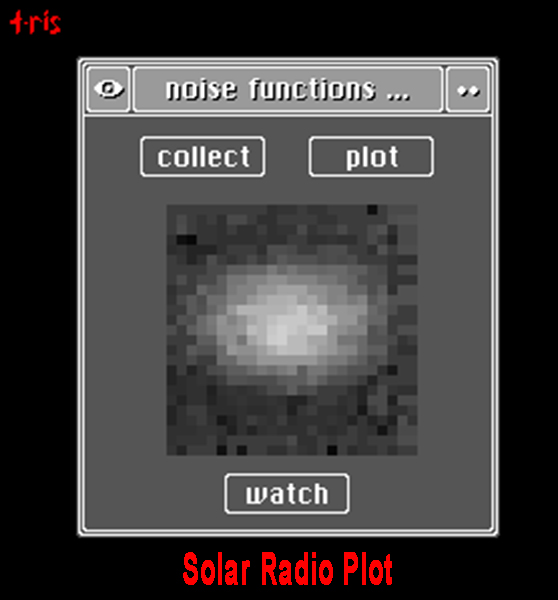WCC's Lanihuli Observatory operates a slewable log-periodic radio telescope that supports NASA's Radio JOVE Project, which monitors natural radio emission from Jupiter, the Sun and our Milky Way Galaxy. This radio telescope can be tuned to frequencies between 18 and 30 MHz. In addition, the observatory's NOAA Weather Satellite 1.5-meter diameter mesh dish antenna, which is tuned to 1700 MHz for satellite reception, can also be used to record radio emission from the Sun.


Log-Periodic Antenna (Radio JOVE)
Signals captured by the log-period antenna are routed to the observatory's control room and processed by an FS200 radio spectrograph that operates within the range from 18 to 30 MHz. This spectrograph is capable of scanning 200 channels 10 times per second, yielding a total of 2000 samples per second.

This log-periodic antenna is used primarily to support the WCC's Radio JOVE Project, which is sponsored by NASA Goddard Space Flight Center. This project focuses on monitoring three particular radio sources:
- Jovian Radio Noise. As the Jovian moons interact with the planet's magnetic field, they occasionally induce radio storms that emit signature bursts known as L-bursts (long) and S-bursts (short). The orbital position of Io can even be used to predict some of these storms.
- Solar Radio Bursts. At the decametric wavelengths monitored by the Radio JOVE receivers, the Sun emits radio bursts that are stronger but less predictable than the radio storms associated with Jupiter. More likely to occur when sunspots are visible, these solar bursts usually last for about 30 seconds.
- Galactic Background Radio Noise. This radio noise, which originates from the galactic magnetic field, yields a continuous hissing sound that is always present in the background. This galactic noise exhibits a gradual variation over a 24-hour period.

1.5m Mesh Dish Antenna (NOAA Weather Station)
The NOAA Weather Tracking antenna is capable of recording the solar image at a frequence of 1700 MHz. While this technique is normally used to align the antenna for accurate tracking of the polar orbiting NOAA satellites, it can also serve to record a radio image of the Sun. The following shows a typical scanned plot of the Sun's radio noise:



